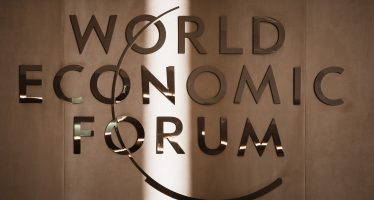Global Warning: Asia is Critical to Addressing Climate Change
Asia emits about half of the world’s global greenhouse gas emissions and that figure is set to increase if the right policies are not put in place.
Asia’s future will be heavily shaped by climate change. The region has special vulnerabilities, including extensive coastal populations susceptible to sea level rise, large river basins prone to flooding, and many workers in climate-sensitive sectors, such as agriculture and tourism.

Asia needs to the right policies for the global climate crisis to be addressed. Photo: Pang Yuhao
Failure to contain climate change could risk losing nearly a quarter of economic output by the end of the century, even under a partial measure. The biggest losses would be in the lowest-income areas with the least capacity to cope.
At the same time, the region is increasingly a cause of the climate crisis. Historically, the region was not a major emitter, but the greenhouse gas emissions from developing countries in Asia have been growing far faster than the global average since the 1980s.
The share of global emissions by Asia’s developing countries doubled, from 22% in 1990 to 44% in 2019, and is expected to remain at this level until mid-century, if current policies continue. At current levels of greenhouse gas emissions, Asia would by itself exhaust the global remaining carbon budget consistent with under 1.5°C warming by 2040.
The region’s carbon intensity – the amount of carbon emissions produced per dollar of gross domestic product – is 41% higher than the rest of the world, and more than double that of North America and the European Union in 2019. When that intensity is combined with developing Asia’s rapid economic growth, there is potential for rapid escalation of emissions.
The energy sector accounts for three-fourths of greenhouse gas emissions from the region. Within the energy sector, electricity and heat production is the largest and fastest-growing source of emissions, accounting for about 40%, followed by manufacturing (18%). Agriculture, land use, and forestry are also important emissions sources (13%).
The region’s employment and production rely heavily on activities that are currently carbon-intensive, such as manufacturing, transportation, and energy. From 2015-2021, these sectors accounted for 43% of GDP and 42% of employment. Their contributions to GDP are substantially higher in the region compared to other parts of the world. In the United States, these activities contributed to about 18% of GDP, in Europe about 23%, and 24% in both Latin America and Sub-Saharan Africa.
If the climate crisis is to be addressed, Asia must be at the center of the conversation.
Asia’s growth trajectory will have important implications for global climate goals. An estimated 940 million people in the region have limited or infrequent access to electricity. As households in the region become wealthier, demand for energy will increase. Asia’s projected growth in middle-class consumer spending dwarfs all parts of the world. With that spending, expansion will come a growing carbon footprint.
To address climate change and put the world on a sustainable track, Asia must shift to a low-carbon growth trajectory that would focus on shifting to cleaner sources of energy, improving energy efficiency, and reducing emissions from land use change and agriculture.
While there are many policies that can encourage those shifts, pricing reforms have a critical role to play. Key measures include to:
Put a price on carbon emissions: Only carbon pricing can ensure that mitigation happens where it is cheapest. To date, 21% of the region’s emissions have carbon pricing, compared with 34% in Europe. Asia’s developing economies with carbon pricing primarily only subject selected sectors to the policy, principally powerplants. Other emitting activities, such as transportation and manufacturing, are not included. Moreover, carbon pricing levels in the region also are well below those of the rest of the world, and transmission of prices can be improved by reducing barriers and market rigidities.
Remove climate-damaging subsidies: Right now, the region actually has many negative carbon prices in the form of subsidies that encourage fossil fuel consumption. The region’s subsidies to fossil fuels last year amounted to $116 billion, which is much more than what it spent to subsidize renewable energy. An even higher amount was spent on subsidies to agriculture and land use, which also tend to favor carbon-intensive practices. Together, these subsidies cost more than a rapid low-carbon transition – before any benefits are counted.
Encourage international emissions trade: The lowest cost opportunities to mitigate emissions growth are often in lower-income, lower-emissions countries that are still facing rising energy needs. There is potential for win-win outcomes if more wealthy countries with higher mitigation costs finance the additional investment needs required for low carbon development in the lower-income countries through carbon offset markets. This potentially could offset much of the cost of decarbonization.
If the climate crisis is to be addressed, Asia must be at the center of the conversation. There are signs of change in the “net zero” pledges made by the region’s largest emitters. For those pledges to be realized at a contained cost, efficient policies need to be implemented quickly.
Every day that action is delayed, the cost of achieving international climate goals rises, and the benefits fall.
By David A. Raitzer, Manisha Pradhananga, Shu Tian
The views expressed are those of the authors and do not necessarily reflect the views of the Asian Development Bank.
You may have an interest in also reading…
WEF 2022: The World Is No Longer Flat
This week, a colourful cabal of cognoscenti gathered in Davos to offer diverse takes on the world’s most pressing issues.
Inverted Yield Curves and Central Bankers Pull Focus to the Tetons as BRICS Founders
Another day, another financial event — the 46th US Federal Reserve Summer Symposium — for Wim Romeijn to ponder… As
Data-Sharing: Privacy Agreement to Limit Prying by US Intelligence
Europeans can now complain if they think intelligence services gathered their data — and it’s business as usual for tech



















































































